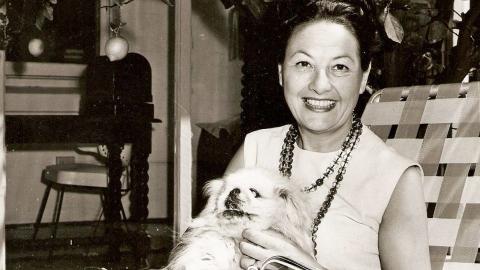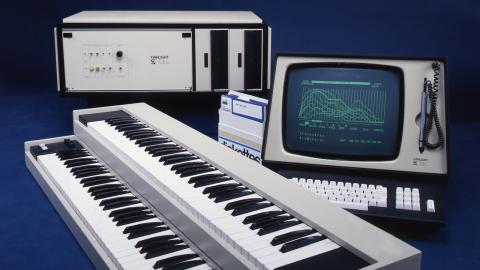

Ron Grainer and Doctor Who
Ron Grainer: Australian Doctor Who theme composer
You only need to hear the first few notes to recognise the theme to the long-running British science-fiction television show, Doctor Who. But few know that this signature tune was written by a classically trained Australian composer.
Ron Grainer (11 August 1922 – 21 February 1981) was born in Atherton, Far North Queensland. He was something of a child prodigy, playing the piano at the age of two and giving concerts to the local community by the age of six.
Later, he studied music with Sir Eugene Goossens at the Sydney Conservatorium of Music, but his studies were interrupted by the Second World War. After receiving an army disability pension Grainer returned to music and decided to concentrate on composition.
In 1952, Grainer moved to London with his wife Margot and her daughter. He found regular work as a pianist in light entertainment, included touring as part of the musical act The Allen Brothers and June. The act included him being hit on the head by the grand piano lid and then falling into the orchestra pit.
Despite this inauspicious start his talent was soon recognised. He made three appearances at the London Palladium and gained a reputation as a piano accompanist. It was during this period that he became involved in recording and was much in demand at BBC TV.
In this interview with Binny Lum, Grainer talks about his life and career in London and how he approached composing for television:
Ron Grainer interviewed by Binny Lum, 1966. NFSA title: 1108376. Courtesy: Sharon Terry and Geoff Charter.
Doctor Who
Grainer wrote the theme tunes to Maigret (1960), Steptoe and Son (1962) and The Prisoner (1967), but his most memorable and enduring composition is the theme to Doctor Who (1963 – current). While Grainer is credited with composing the Doctor Who theme, much of its recognisable sounds were realised by Delia Derbyshire of the BBC Radiophonic Workshop.

Derbyshire used tape loops to create the otherworldly soundscape, not a theremin as is often assumed. Each note was individually created through manually manipulating analogue tape – cutting, splicing, speeding up and slowing down segments. It is recognised as a significant and innovative piece of electronic music, well before synthesisers or multitrack mixers became available.
When Grainer heard the final recording he was dumbfounded and quizzically asked Derbyshire if he had written the piece. Grainer wanted to give Derbyshire credit as a co-composer but it was against BBC policy at the time. Many versions have been re-recorded since, some even with lyrics, but the signature sounds have always remained.
The NFSA recently acquired a 1990s version of the Doctor Who theme by Mark Ayres in a compilation CD of film and television music, The Cult Files (Volume 1). This CD was published in 1996 by record label Silva Screen Records UK.
The National Film and Sound Archive of Australia acknowledges Australia’s Aboriginal and Torres Strait Islander peoples as the Traditional Custodians of the land on which we work and live and gives respect to their Elders both past and present.


